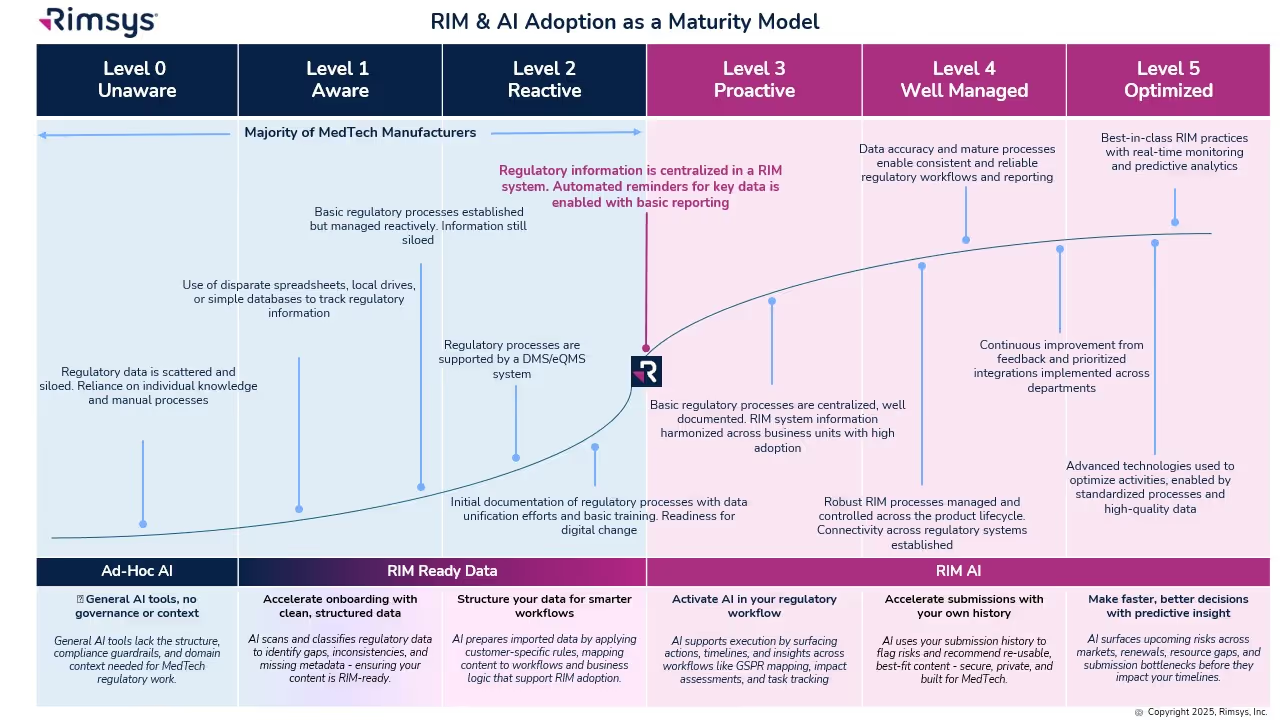
Regulatory affairs professionals at large medical device companies must manage heavy submission workloads, registrations for products currently on the market, and ever-changing regulatory requirements. Many RA teams are still relying on paper documents, spreadsheets, and other outdated tools and methods to complete this work, while others have taken steps toward digitization and automation of key processes.
Regulatory teams often struggle to find software tools designed specifically for their workflows. ERP (Enterprise Resource Planning) systems are sometimes used by RA teams to track product attributes, such as selling status and support/service history. ERP systems, however, are not designed to handle the complexities of regulatory workflows nor the type of data that needs to be securely managed within a medtech company.
What is ERP software?
Enterprise Resource Planning (ERP) software encompasses a wide range of systems that typically manage multiple sectors within an organization. Originally designed for manufacturers, ERP systems are now used by industries as varied as public utilities, wholesale distributors, service organizations, and retail companies.
ERP systems manage the data and workflows associated with almost every sector within an organization, including:
- Manufacturing
- Device identification/history
- Purchasing and sourcing
- Service delivery
- Finance
- Human resources
- Engineering
- Asset management
- Supply chain
- Customer management and sales
Modern ERP systems are designed to provide a single, integrated platform to manage the majority of functions within an organization. The trade-off, however, is that because functionality needs to meet the needs of a variety of organizations, it will often fall short in highly regulated industries that require very specific data, workflows, and controls.
What are RIM systems?
Regulatory information management (RIM) systems have been around for years in the pharmaceutical industry but are relatively new in the medical device industry. Holistic RIM systems enable users to create a single source of truth for all data associated with regulatory submissions and registration management. Think of a RIM system as an ERP system for regulatory teams that is used to digitize data and automate key processes across the organization.
Medtech RIM system functions are designed to support a range of regulatory activities across a product’s lifecycle. In addition to centralizing core regulatory data and managing regulatory registrations and certificates, RIM systems can also support:
- Submission planning, authoring, and assembly
- Collaborative content authoring and project management
- UDI management
- Standards management
- Essential principles/GSPR management, including bulk updating
RIM systems are product-centric, structuring data around individual regulated products and their requirements, market by market. This means that RIM systems can track product-specific data, such as UDI records, and link standards with individual products to easily identify products affected by standards updates and assess their impact.
Integrating ERP and RIM systems
The most common point of integration between ERP and RIM systems is an “available to sell” setting at the product level. Product information in a RIM system will include registration status for each country and an indication of whether the product can currently be marketed and sold there. It is critical that the ERP system restrict distribution and/or sale of a product automatically based on the selling status set by the regulatory team.
ERP systems will also often be integrated with Product Lifecycle Management (PLM) systems used by product development and manufacturing teams to manage product information and at every step of a product’s lifecycle, including product data, records, specifications, and configurations. ERP systems can also be integrated with eQMS (electronic quality management systems) and RIM systems to ensure coordination of risk management activities, product updates, and quality data between the regulatory, quality, development, and manufacturing teams. Ideally, your regulatory team is notified as early as possible of any planned updates or changes to a product that is in-market or pending market approval.
RIM for regulatory projects and processes
Digitization and automation of regulatory data are more critical as global regulations continue to change and become more complex. Getting a medical device to market is a difficult process, but RIM software cuts the time and costs associated with product registrations while providing tools essential for ensuring ongoing compliance. ERP systems are central to an organization’s operation, but their broad focus simply does not provide the detailed functionality needed by regulatory teams. Integrate your ERP system with a holistic RIM system to give your regulatory team the tools they need to bring your products to market successfully and to maintain compliance. To get your regulatory ducks in a row, only a RIM system will do!
To learn more about the Rimsys RIM system, talk to one of our experts today.
Similar posts







.avif)


